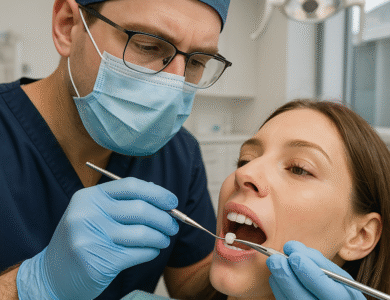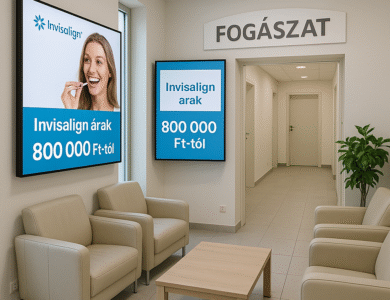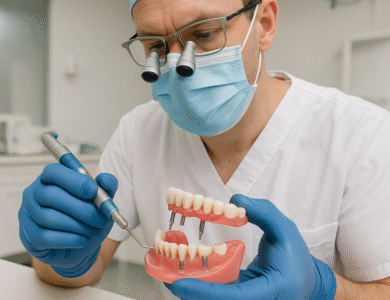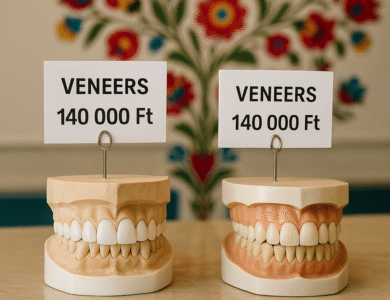
How Many Dental Clinics Are There in Australia?
Maintaining good oral health is essential for overall well-being. If you’re wondering, “How Many Dental Clinics Are There in Australia?” the country boasts a diverse and extensive network of clinics catering to all kinds of dental needs—from routine check-ups to specialized treatments. Regular visits to a reliable dental clinic can prevent serious dental issues, save you money in the long term, and enhance your quality of life. In this article, we will explore the number of dental clinics in Australia, the types available, tips for choosing the right clinic, and the broader context of dental health awareness in the country.
The Number of Dental Clinics in Australia
According to the latest statistics, Australia is home to over 20,000 registered dental clinics, spanning metropolitan cities, regional towns, and rural areas. This number has steadily increased in the last decade due to a combination of factors, including:
-
Growing public awareness about oral hygiene and preventive care.
-
Advances in dental technology that allow clinics to offer specialized and efficient services.
-
Government initiatives promoting oral health for children, low-income families, and vulnerable populations.
Dental clinics in Australia range from solo practices run by a single dentist to large, multi-specialist practices employing dozens of professionals. Urban areas like Sydney, Melbourne, and Brisbane have the highest concentration of dental clinics, while rural regions have fewer clinics, often requiring patients to travel long distances for care.
Types of Dental Clinics in Australia
Understanding the types of dental clinics available can help you make an informed choice when seeking dental care. Here are the main categories:
1. General Dental Clinics
These clinics provide comprehensive dental care for everyday needs. Services typically include:
-
Routine dental check-ups
-
Teeth cleaning and polishing
-
Fillings and restorative treatments
-
Preventive care such as fluoride treatments and sealants
-
Basic cosmetic dentistry (whitening, minor corrections)
General clinics are often the first point of contact for patients and play a crucial role in preventive oral health.
2. Specialist Dental Clinics
Specialist clinics focus on specific areas of dentistry. Common specialties include:
-
Orthodontics: Correcting misaligned teeth and jaw irregularities with braces or aligners.
-
Periodontics: Treatment of gum diseases and supporting structures of teeth.
-
Oral Surgery: Performing procedures like tooth extractions, implants, and corrective jaw surgery.
-
Pediatric Dentistry: Specialized dental care for infants, children, and adolescents.
-
Endodontics: Treating issues related to tooth pulp, such as root canals.
Specialist clinics often require referrals from general dentists, although some accept new patients directly.
3. Public Dental Services
Public dental clinics in Australia are funded by state and territory governments. They provide dental care at low or no cost to eligible groups, including:
-
Children under a certain age
-
Low-income families
-
Seniors and pensioners
-
Individuals with specific health conditions
Public clinics are essential in ensuring that vulnerable populations have access to dental care and preventive services.
4. Private Dental Practices
Private practices are typically owned and operated by individual dentists or small groups. They offer:
-
Personalized care and attention
-
Flexible appointment scheduling
-
Advanced treatments using the latest technology
-
A wider range of cosmetic dentistry options
While private clinics tend to be more expensive than public options, they are often preferred for the level of service and convenience they provide.
How to Choose the Right Dental Clinic
Choosing the right dental clinic is crucial for maintaining long-term oral health. Here are some practical tips to guide your decision:
-
Location and Accessibility
Choose a clinic that is easy to reach from home or work. Convenience can ensure you stick to regular appointments. -
Qualifications and Experience
Research the qualifications and experience of the dentists and staff. Check if they are registered with the Australian Health Practitioner Regulation Agency (AHPRA). -
Range of Services
Ensure the clinic offers the services you need. For example, if you require orthodontic care, verify whether they have specialists available. -
Patient Reviews
Read online reviews and testimonials to get a sense of the clinic’s reputation and patient satisfaction. -
Hygiene and Safety Practices
Look for clinics with modern sterilization protocols and safety measures, especially in the post-pandemic context. -
Cost and Insurance
Consider your budget and whether the clinic accepts private health insurance. Some clinics offer payment plans to make treatment more affordable.
Dental Health Awareness in Australia
Australia has made significant strides in promoting oral health awareness. Initiatives include:
-
School dental programs: Teaching children about oral hygiene and providing free or low-cost dental care.
-
Public health campaigns: Encouraging adults to schedule regular check-ups.
-
Research and innovation: Supporting the development of new dental technologies and treatments.
These efforts have contributed not only to the rise in the number of dental clinics but also to improved oral health outcomes nationwide.
Regional Distribution of Dental Clinics
The distribution of dental clinics in Australia is uneven:
-
Major Cities: Sydney, Melbourne, and Brisbane have dense networks of clinics, including specialist services.
-
Regional Towns: Clinics are fewer, often general practices that serve multiple towns.
-
Rural Areas: Access can be limited, making tele-dentistry and mobile dental services increasingly important.
Government programs and private initiatives aim to reduce disparities and ensure all Australians can access quality dental care.
The Future of Dental Clinics in Australia
The dental industry in Australia is evolving rapidly, with trends including:
-
Digital Dentistry: Use of 3D imaging, AI diagnostics, and computer-assisted treatments.
-
Preventive Focus: Increased emphasis on education, early detection, and minimally invasive procedures.
-
Tele-dentistry: Remote consultations and follow-ups for patients in remote areas.
-
Sustainability: Eco-friendly practices, including reduced waste and energy-efficient technologies.
These trends suggest that the number and quality of dental clinics will continue to grow, making oral healthcare more accessible and advanced.
Conclusion
Knowing how many dental clinics exist in Australia helps you make informed choices about your oral health. With over 20,000 clinics serving diverse needs—from general dental care to highly specialized treatments—Australians have ample options to maintain and improve their oral health. Choosing the right clinic, staying informed about dental trends, and participating in preventive care are key to a healthy, confident smile.
FAQ Section
1. How many dental clinics are there in Australia by state?
Australia has over 20,000 dental clinics, with the highest concentration in New South Wales, Victoria, and Queensland. Smaller states and territories have fewer clinics, but government programs help provide access in remote areas.
2. How many private vs public dental clinics exist in Australia?
Approximately 70–75% of dental clinics in Australia are private practices, while the remaining are public or community dental clinics providing free or low-cost services to eligible patients.
3. How many dental clinics in Australia offer specialist services?
Around 10–15% of dental clinics in Australia specialize in areas like orthodontics, periodontics, oral surgery, pediatric dentistry, and endodontics.
4. How many dental clinics in Australia are located in rural areas?
Rural Australia has a smaller number of clinics, roughly 2,000–3,000, and many rely on mobile dental units or tele-dentistry to reach underserved communities.
5. How many dental clinics in Australia provide pediatric care?
About 3,000–4,000 clinics focus on pediatric dentistry, offering child-friendly environments and treatments tailored to young patients.
6. How many new dental clinics open each year in Australia?
On average, 300–500 new dental clinics open annually, driven by growing demand for preventive care and cosmetic dentistry services.
7. How many dental clinics in Australia accept private health insurance?
Most private clinics (over 90%) accept some form of private health insurance, allowing patients to claim rebates for treatments such as fillings, crowns, and orthodontics.
8. How many dental clinics in Australia offer emergency dental services?
Approximately 30–40% of clinics provide emergency services, including tooth extractions, pain relief, and urgent repairs outside regular hours.
9. How many dental clinics in Australia are part of large group practices?
Large group practices account for roughly 10–15% of all clinics, offering multiple specialists under one roof and advanced diagnostic equipment.
10. How many dental clinics in Australia focus on cosmetic dentistry?
Around 5–10% of clinics specialize in cosmetic procedures such as teeth whitening, veneers, and smile makeovers.
11. How many dental clinics in Australia are registered with AHPRA?
All professional dental clinics in Australia must have registered practitioners with AHPRA, ensuring high standards of care and adherence to legal and ethical guidelines.
12. How many dental clinics in Australia provide free or low-cost public dental care?
Public and community clinics number about 5,000–6,000, catering to children, low-income families, seniors, and people with special health needs.
13. How many dental clinics in Australia offer orthodontic treatments?
Roughly 2,500–3,000 clinics provide orthodontic services, including braces, aligners, and jaw alignment treatments.
14. How many dental clinics in Australia use modern digital dentistry technology?
An estimated 40–50% of clinics have adopted digital technology such as 3D imaging, intraoral scanners, and computer-assisted treatments for improved accuracy and patient comfort.
15. How many dental clinics in Australia are accessible for people with disabilities?
About 60–70% of clinics have wheelchair access and other facilities to accommodate patients with disabilities, though accessibility can vary by location, especially in rural areas.
16. How do I find a dental clinic near me?
You can search online, check local directories, or use dental health apps to locate clinics in your area.
17. What should I look for in a dental clinic?
Consider location, services offered, staff qualifications, patient reviews, and cleanliness.
18. Are there free dental services available in Australia?
Yes, public dental clinics provide free or low-cost services to eligible patients, including children and low-income families.
19. How often should I visit the dentist?
It’s generally recommended to visit the dentist at least every six months for regular check-ups and cleaning.
20. What is the future of dental care in Australia?
The industry is moving towards digital dentistry, tele-dentistry, preventive care, and sustainable practices.
If you want to connect with healthcare providers, including dental clinics, download Docintur to easily connect with physicians, hospitals, and clinics. Get Docintur on the App Store for iOS devices and on the Play Store for Android devices.





